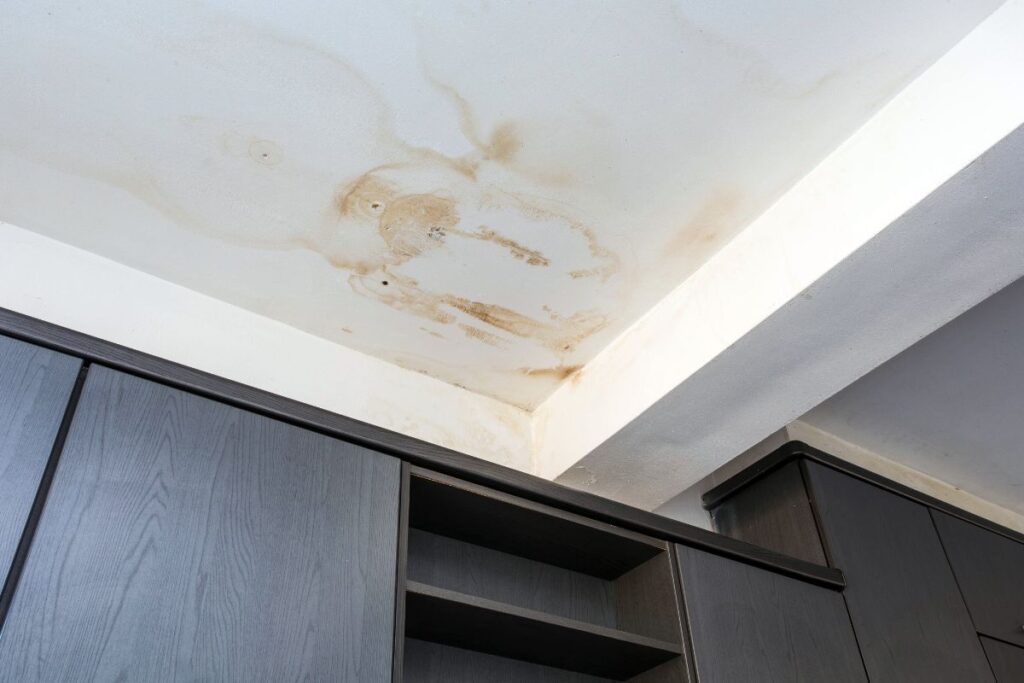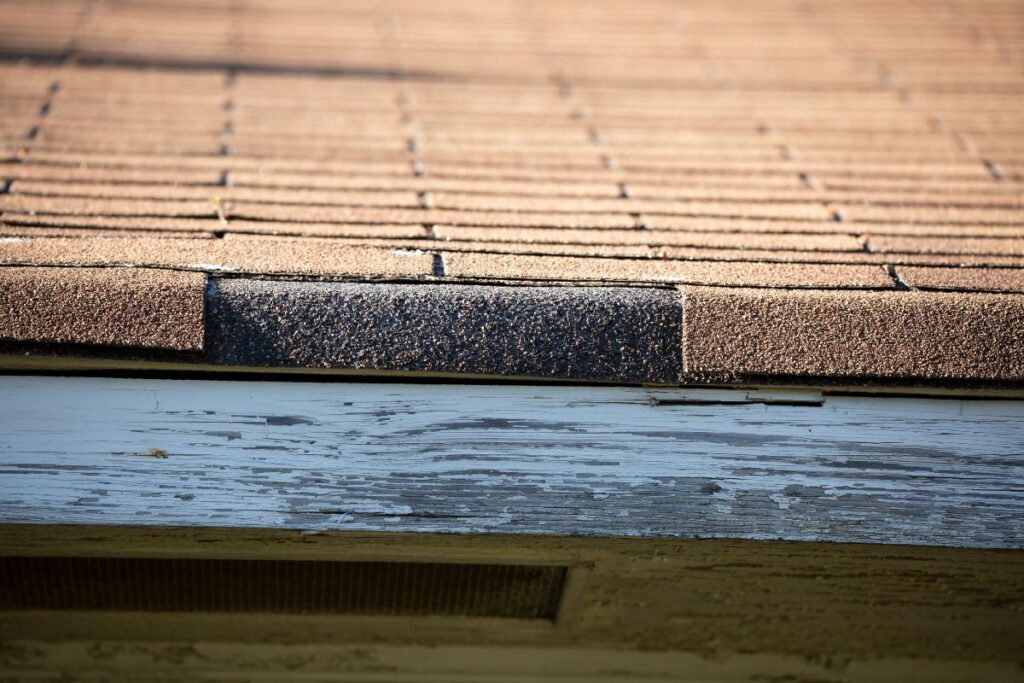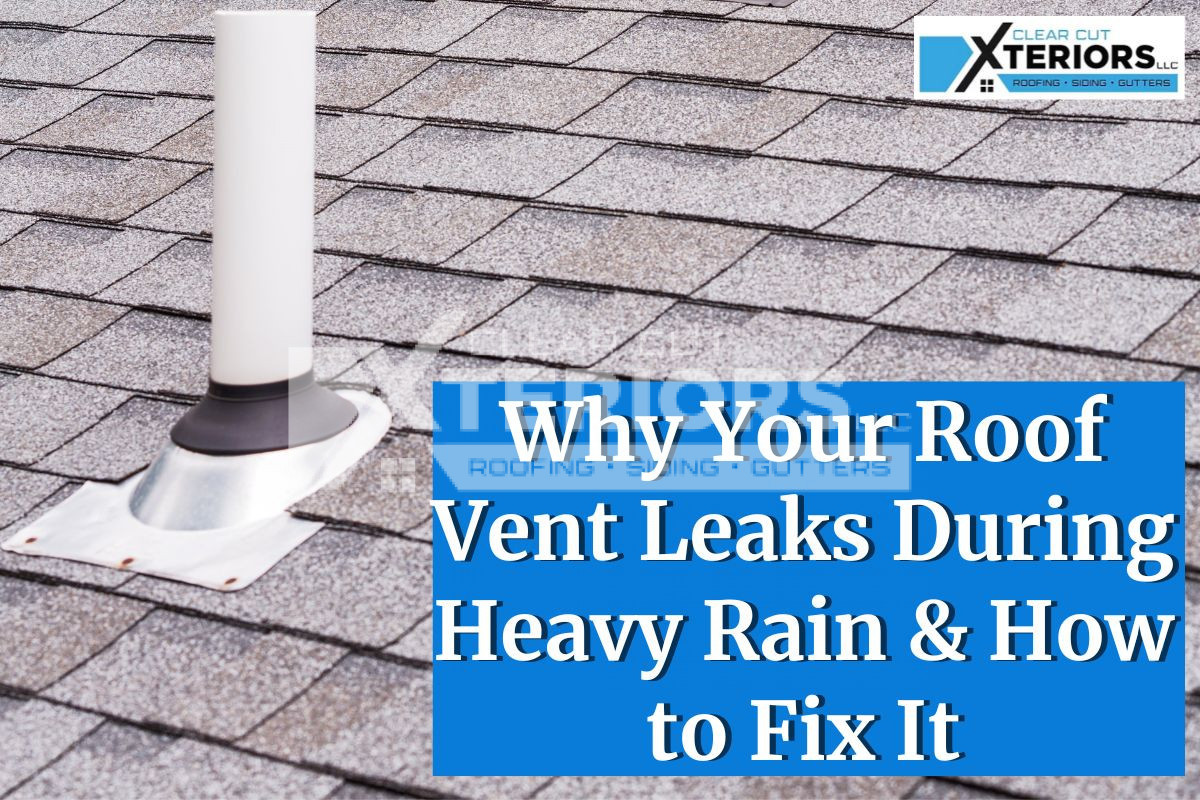A vent pipe is the part of your home that extends out from your roof and actively maintains the pressure in the sewage system within your home by allowing gasses to escape. While beneficial to your home, roof vent leaks are an issue that can frequently occur. These leaks may cause mold growth, water damage, and other problems if they are not handled quickly enough.
That’s why we’ve created this blog post, to help you understand what causes roof vent pipe leaks during periods of heavy rain and offer practical solutions to permanently resolve the issue.
Understanding Roof Vent Leaks
Roof vents are crucial to a house’s ventilation system, and without them, sewer gasses would enter your home rather than exit from the top. But when it rains heavily, these vents can start leaking. This often happens if they aren’t installed correctly, or if the flashing or vent pipe boot around them is damaged.
Signs Of A Leaking Roof Vent
Identifying a leaking roof vent is vital for prompt repair to prevent additional damage. Here’s a detailed breakdown of each sign:
1. Water Stains On The Ceiling:

Discolored patches on your ceiling could indicate ongoing water infiltration. Prompt action is crucial to prevent structural damage and mold growth, especially when these stains are large.
2. Dripping Sounds in the Attic:
Hearing water dripping in the attic suggests a leaking roof vent. Investigate and repair the source promptly to prevent structural damage caused by the water.
3. Mold and Algae Growth:
Mold or algae growth around the roof vent in warm, humid climates indicates water leaks. Addressing these growths promptly is essential to prevent further damage and maintain a healthy living environment.
4. Missing or Damaged Shingles:

Buckling or curling shingles near the roof vent may allow for water to easily access the interior of your roof, leading to leaks. Timely replacement or repair is crucial to prevent further damage.
5. Damaged Flashing:
Improperly installed or deteriorating flashing around the roof vent contributes to leaks. Proper installation and maintenance of flashing are essential for preventing roof vent leaks.
How To Fix a Leaking Roof Vent
Fixing a leaking roof vent requires several steps to ensure a proper repair. Here’s a comprehensive guide on how to fix it:
Step #1. Identify The Source Of The Leaks:
Look for cracks or broken seams on plastic or metal roof vents. Check for signs of water damage, such as stains or discoloration around the vents.
Step #2. Remove Old Vent Boots:
Replace cracked or damaged vent boots. Slip a new rain collar over the pipe, seal it with a waterproof sealant, and reposition the shingles.
Step #3. Seal The Base Plate:
Apply waterproof sealant around the edges of the metal base exposed by pulling back the roof shingles. Reposition the shingles securely in place afterward.
Step #4. Replace Damaged Roof Vents:
Seal old nail holes with waterproof sealant. Attach the new vent with roofing nails, apply sealant around the edges, and dab any exposed roofing.
Step #5. Practice Regular Maintenance:
Regularly check and replace worn-out vent pipe boots and damaged flashing or shingles around vents and chimneys.
Step #6. Hire A Professional:
For leaks around HVAC components, hire professionals to prevent hazards. They have the training and expertise to handle complicated repairs correctly.
Utilizing these steps can help you effectively fix roof vent leaks and prevent further damage to your home.
Common Causes Of Roof Vent Leaks During Heavy Rain
- Pipe Boot Failure: Pipe boots covering the base of vent pipes can degrade over time, developing cracks or gaps that allow water in. Replace damaged boots with properly sealed ones to prevent further leaks.
- Collar Failure Around Gas Vent: Collars around gas vents should seal the area through which the vent pipe exits the roof. Replace deteriorated collars to prevent leaks, especially in vulnerable areas like roof valleys.
- Clogged or Blocked Vents: Leaves, twigs, and dirt can gather around roof vents, clogging them up and preventing water from draining properly. Leaks during heavy rain can be avoided by routinely clearing debris from around vents.
- Improper Installation: When roof vents are installed improperly, gaps or improper seals may form, allowing water to seep in during periods of heavy precipitation. Having roof vents installed by qualified specialists is essential to guaranteeing adequate sealing and avoiding leaks.
- Age and Wear: As roofs age, materials can deteriorate, including the seals around roof vents. Regular inspections and maintenance can help identify signs of wear and tear early on, allowing for timely repairs to prevent leaks.
- Flashing Issues: Major leaks can also be caused by improper flashing around roof vents. To ensure that water doesn’t leak in around the vent, the flashing needs to be properly sealed and fastened firmly.
Conclusion
Dealing with a leaking roof vent can cause stress for homeowners. But don’t worry, it can be fixed without too much trouble. By learning why roof vents leak and taking the steps to stop it from happening, you can make sure your roof stays strong and keeps your home safe from water damage. If you need help fixing a leaky roof vent, or if it seems like a big problem, it’s best to get help from a professional roofer. Taking care of the issue quickly can save you a lot of trouble and money in the future.
If you’re noticing signs of a leak in your home or worrying about the lifespan of your roof, don’t hesitate to contact Clear Cut Xteriors for residential roof repair in Minnesota. With over 20 years of combined experience, our team can handle any roofing issue, from minor leaks to major replacements. We offer flexible scheduling and free estimates, ensuring your roof gets the attention it needs without delay. For the best roof repair services, give us a call at (651) 340-3410.



